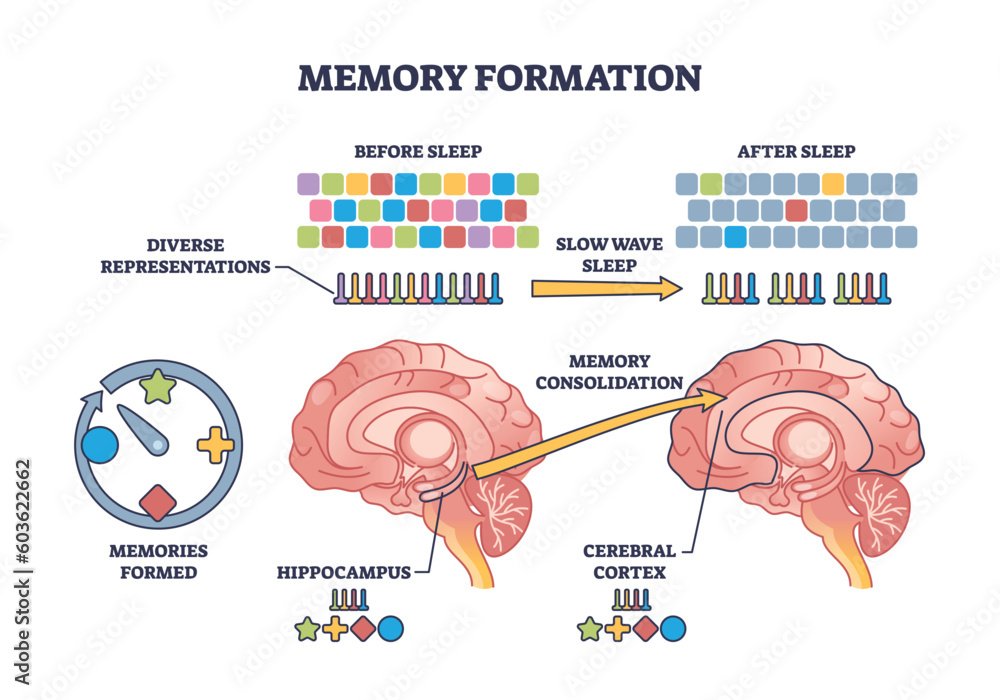Gene editing is revolutionizing the landscape of medicine, providing solutions to previously incurable genetic diseases. With pioneering advancements like CRISPR technology, base editing, and prime editing, researchers are redefining the possibilities of genetic manipulation. These groundbreaking techniques allow scientists to alter DNA sequences with unprecedented precision, potentially curing ailments at their root cause. Clinical trials for gene therapy are already underway, showcasing the transformative potential of gene editing in real-world applications. As we stand on the precipice of this new era, the benefits of gene editing could reshape healthcare and improve the lives of millions globally.
The modification of genetic material is garnering significant attention in scientific communities and beyond, as it offers hope in the fight against hereditary conditions. Options such as genome editing, which encompass innovative methodologies like CRISPR systems, highlight the strides made in reshaping the genetic landscape. Emerging techniques, including advanced versions of base and prime editing, promise to enhance accuracy and minimize errors. Furthermore, the increasing number of clinical evaluations for therapies based on these technologies hints at a burgeoning future where genetic ailments could be effectively treated. As researchers delve deeper into the intricacies of our genetic code, the implications of such advancements could be profound.
Understanding Gene Editing and Its Significance
Gene editing represents a profound advancement in biotechnology, allowing scientists to alter DNA with unparalleled precision. This technology holds immense promise for treating genetic diseases, some of which have historically posed significant challenges to the medical community. With methods like CRISPR and its derivatives, such as base editing and prime editing, researchers can now target specific mutations at the molecular level. This capability not only enhances our understanding of genetics but also serves as a foundation for developing innovative therapies that can potentially eradicate hereditary conditions.
The significance of gene editing extends beyond mere correction of genetic errors; it embodies a new paradigm in medical science. The ability to rewrite genetic information could redefine the treatment landscape for diseases like sickle cell anemia, cystic fibrosis, and certain forms of cancer. As clinical trials increasingly incorporate these advanced techniques, the prospect of utilizing gene editing to alter the course of diseases that were once deemed untreatable becomes a tangible reality for patients and families alike.
Base Editing: A Revolution in Gene Therapy
Base editing has emerged as a groundbreaking approach within the gene editing landscape, specifically designed to correct point mutations that frequently contribute to genetic diseases. By acting on the individual nucleotide bases — adenine (A), cytosine (C), guanine (G), and thymine (T) — base editing offers a more precise means of correcting errors than traditional CRISPR methods, which often introduced unintended changes. This precision reduces the risk of off-target effects, making base editing a safer option, particularly in clinical trials focused on gene therapy.
The implementation of base editing is exemplified in the remarkable case of Alyssa Tapley, who, through a clinical trial utilizing this technology, overcame T-cell leukemia. Her experience underscores the transformative potential of base editing, providing a glimpse into the future of targeted gene therapies that promise to substantially improve patient outcomes. As research continues to expand, base editing’s role in combating various genetic disorders is likely to increase, paving the way for a new era in genetic medicine.
Prime Editing: The Next Frontier in Genetic Correction
Prime editing represents an ambitious leap forward in gene editing technologies, distinguishing itself through its capability to make precise insertions, deletions, and substitutions of DNA sequences without causing double-strand breaks. This innovative method functions similarly to a word processor capable of searching and correcting text — or in this case, genetic code — thereby allowing scientists to rectify errors that traditional CRISPR-based methods cannot easily address. The implications of prime editing are vast, as it could potentially correct a wider array of mutations that lead to severe genetic disorders.
Currently, ongoing clinical trials focusing on prime editing are generating excitement in the scientific community, with researchers optimistic about its application in treating complex genetic conditions. The technology’s versatility positions it as a formidable tool in the fight against diseases caused by single-letter mutations or other types of genetic anomalies. As researchers continue to refine this approach, prime editing could truly revolutionize gene therapy, providing patients with new hope for effective treatments.
The Role of CRISPR Technology in Gene Editing
CRISPR technology has been pivotal in the evolution of gene editing, serving as the foundational framework upon which newer techniques like base editing and prime editing have been developed. Utilizing a system derived from the adaptive immune mechanisms of bacteria, CRISPR has enabled researchers to craft targeted modifications to genetic material, fundamentally altering our approach to genetics and molecular biology. This method’s ability to create specific cuts in DNA has enhanced our understanding of gene functions and interactions, advancing both basic and applied sciences.
As we look toward the future, the integration of CRISPR with other innovative editing strategies represents a promising direction for addressing genetic diseases. Various ongoing clinical trials are leveraging CRISPR technology to explore its applications across a spectrum of conditions, fueling hopes for groundbreaking treatments. Such collaborations will undoubtedly accelerate discoveries that could eventually lead to transformative therapies, capable of correcting the very foundations of genetic disorders.
Clinical Trials for Gene Therapy: The Path Forward
The advancement of gene editing technologies has ushered in a new era of clinical trials focused on gene therapy. These trials aim to evaluate the safety and efficacy of innovative treatments designed to correct genetic disorders at their source. By utilizing tools such as base and prime editing, researchers are conducting studies that not only push the boundaries of scientific understanding but also bring hope to patients affected by conditions like muscular dystrophy, hemophilia, and sickle cell disease.
As of now, numerous clinical trials are actively investigating the potential of gene therapy to transform patient lives. The results from these trials will be crucial in determining the viability of gene editing approaches for public health application. Success in these studies could revolutionize treatment protocols and provide a pathway for more personalized medicine, emphasizing genetic underpinnings of health and disease.
Ethical Considerations in Gene Editing
As gene editing technologies like CRISPR, base editing, and prime editing advance, they bring to the forefront a plethora of ethical considerations that demand careful scrutiny. The potential to manipulate the human genome raises profound questions regarding the implications of such interventions. Issues ranging from consent, potential long-term effects, and the societal implications of ‘designer babies’ capture the attention of ethicists, scientists, and policymakers alike, highlighting the need for comprehensive regulatory frameworks.
Debates surrounding gene editing ethics are not solely theoretical; they have practical ramifications that can significantly impact public trust in scientific research. Engaging with the community and involving voices from diverse backgrounds will be essential in shaping the future of gene therapies. As clinical trials continue to progress, fostering transparent discussions about the ethical landscape of gene editing will guide responsible innovation and ensure that these transformative technologies are employed in ways that prioritize safety and societal impact.
Future Innovations in Genetic Medicine
The landscape of genetic medicine is rapidly evolving, driven by breakthroughs in gene editing technologies. As scientists refine their techniques and explore new methodologies, the future promises a host of innovative therapies that could address previously intractable genetic conditions. The integration of artificial intelligence with gene editing may lead to unprecedented efficiencies in designing and executing genetic modifications, ultimately expediting the development of treatments for diverse populations.
Moreover, ongoing advancements in genetic understanding will continue to enhance our ability to apply these editing technologies more effectively. As researchers uncover the complexities of gene interactions and the implications of polymorphisms on health, targeted gene therapies are likely to become even more nuanced and personalized. The field stands on the cusp of a revolution that could change the face of medicine, empowering individuals and families with the knowledge and tools they need to combat genetic diseases.
The Importance of Collaborations in Gene Editing Research
Collaborative efforts among academic institutions, government agencies, and biotechnology companies are pivotal in advancing gene editing research. These partnerships leverage a wealth of expertise and resources, fostering an environment conducive to innovation and scientific discovery. The collaboration between entities like Harvard University, the NIH, and DARPA exemplifies the power of collective intelligence in tackling complex challenges associated with genetic disorders.
As researchers work together, they can expedite the translation of laboratory discoveries into clinical applications. This synergy is essential for ensuring that promising gene editing technologies are developed responsibly and made accessible to patients. By fostering open communication and shared goals among stakeholders, the gene editing community can maximize its potential to bring transformative therapies to market, ultimately improving health outcomes for countless individuals.
The Impact of Basic Science on Gene Editing
Basic science forms the bedrock of all scientific advancements, providing the foundational knowledge necessary for applied research in fields like gene editing. By exploring the fundamental mechanisms of genetic material, scientists like David Liu have been able to develop groundbreaking technologies that are revolutionizing our approach to genetic diseases. The discovery of systems like CRISPR was driven by curiosity and a desire to understand the unknown, which has since translated into practical applications that save lives.
The relationship between basic science and applied research illustrates the importance of nurturing a culture of inquiry and innovation in scientific communities. As researchers continue to investigate the untapped potential of genetic material, they deepen our understanding of biological processes. This knowledge not only fuels the development of advanced gene editing techniques but also inspires the next generation of scientists to explore new frontiers in the quest to conquer genetic diseases.
Frequently Asked Questions
What is gene editing and how does CRISPR technology work?
Gene editing is a method that enables scientists to change an organism’s DNA to modify genes, aiming to treat or prevent genetic diseases. CRISPR technology, specifically, utilizes a system derived from bacterial immune responses, employing a guide RNA and an enzyme (Cas9) to precisely cut DNA at specific locations, allowing for the removal or alteration of genetic material.
How does base editing improve gene editing techniques?
Base editing is an advanced form of gene editing that allows for direct conversion of one DNA base into another without requiring double-strand DNA breaks. This technique enables the correction of point mutations that are responsible for many genetic diseases, making it a safer and more efficient option compared to traditional CRISPR methods that involve cutting the DNA.
What role do clinical trials for gene therapy play in advancing genetic disease treatments?
Clinical trials for gene therapy are essential for testing the safety and efficacy of new gene editing techniques, like base editing and prime editing. They provide critical data on how these therapies can correct genetic diseases in patients, paving the way for wider accessibility and acceptance of gene therapies in medical practice.
What is prime editing and how does it differ from CRISPR and base editing?
Prime editing is a revolutionary gene editing technology that offers more precise changes to DNA sequences compared to CRISPR and base editing. Unlike CRISPR, which primarily uses a cutting mechanism, prime editing allows for targeted insertion, deletion, or replacement of DNA segments with high accuracy, representing a significant leap forward in the ability to correct genetic disorders.
Can gene editing completely cure genetic diseases?
While gene editing techniques like base editing and prime editing show great promise in treating genetic diseases, scientists are cautious about labeling them as cures. Evidence from clinical trials indicates significant improvement or symptom absence in patients, but conclusive long-term results are necessary before confirming these technologies as definitive cures for genetic disorders.
What advancements have been made in gene editing technologies beyond CRISPR-Cas9?
Beyond CRISPR-Cas9, advancements in gene editing include base editing, which allows for precise single-nucleotide changes, and prime editing, which enables accurate insertions and deletions. These innovative techniques enhance the safety and specificity of gene editing, targeting the underlying mutations that cause various genetic diseases.
How has gene editing transformed the approach to treating genetic diseases?
Gene editing has transformed the treatment of genetic diseases by providing precise and targeted methods to correct mutations at the source. Technologies like CRISPR, base editing, and prime editing allow for tailored therapies that can potentially reverse the effects of genetic mutations, offering new hope for patients with previously untreatable conditions.
What are the ethical considerations surrounding the use of gene editing technologies?
The use of gene editing technologies raises several ethical considerations, including concerns over genetic privacy, the potential for designer babies, and the long-term impacts of gene modifications. As these technologies advance, careful consideration of ethical guidelines is essential to ensure responsible usage and to address societal implications.
| Key Points | Details |
|---|---|
| Alyssa Tapley’s Success | Base editing technology cleared Tapley’s T-cell leukemia, allowing her to live a normal life. |
| David Liu’s Contribution | Liu is a key figure in the development of gene editing technologies, including base editing and prime editing, and emphasizes the responsibility of ensuring safety in these therapies. |
| Advancements in Gene Editing | Base editing changes specific nucleotides in DNA, while prime editing allows for precise modifications, addressing a wider variety of genetic mutations. |
| Clinical Trials | There are currently at least 18 clinical trials using base editing or prime editing for various diseases, with promising results. |
| Basic Science and CRISPR | Research into CRISPR has led to significant advancements in gene editing technologies, demonstrating the importance of basic science in medical breakthroughs. |
| Concerns for the Future | Liu expresses concerns about the current challenges facing young scientists and the partnership between academia and government funding. |
Summary
Gene editing is revolutionizing the field of medicine by providing innovative solutions to genetic diseases. As demonstrated by Alyssa Tapley’s success with base editing technology, this approach allows for specific changes to DNA that can lead to effective treatments. With ongoing research and numerous clinical trials, gene editing stands to transform healthcare, though it is accompanied by ethical considerations and the need for responsible implementation. David Liu and his team’s pioneering work emphasize the importance of both basic science and innovative thinking in addressing the complex challenges posed by genetic disorders.







